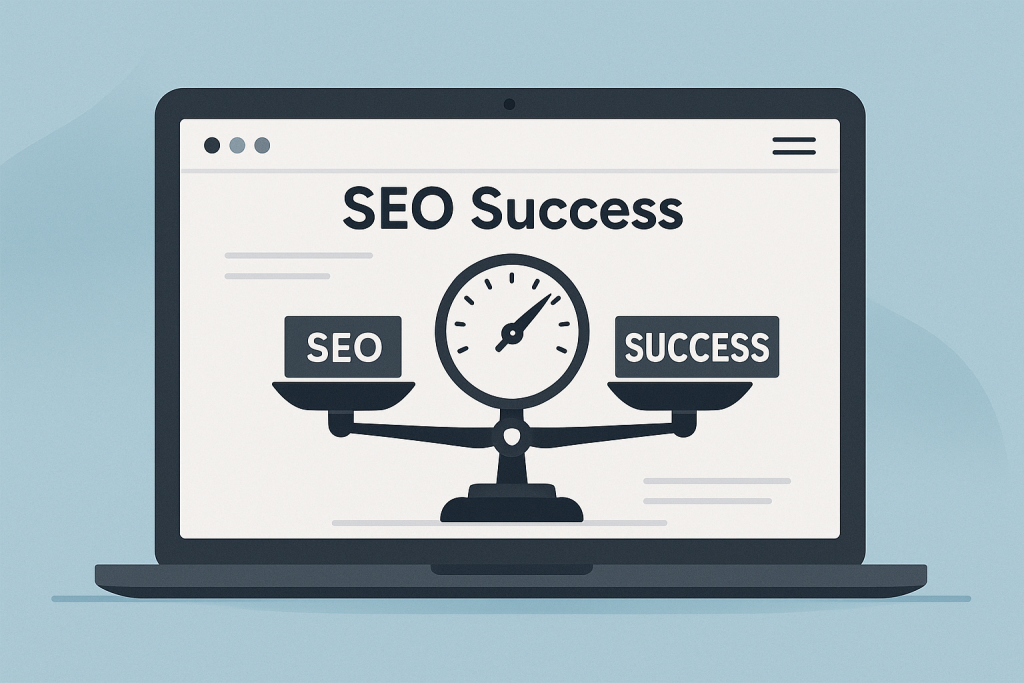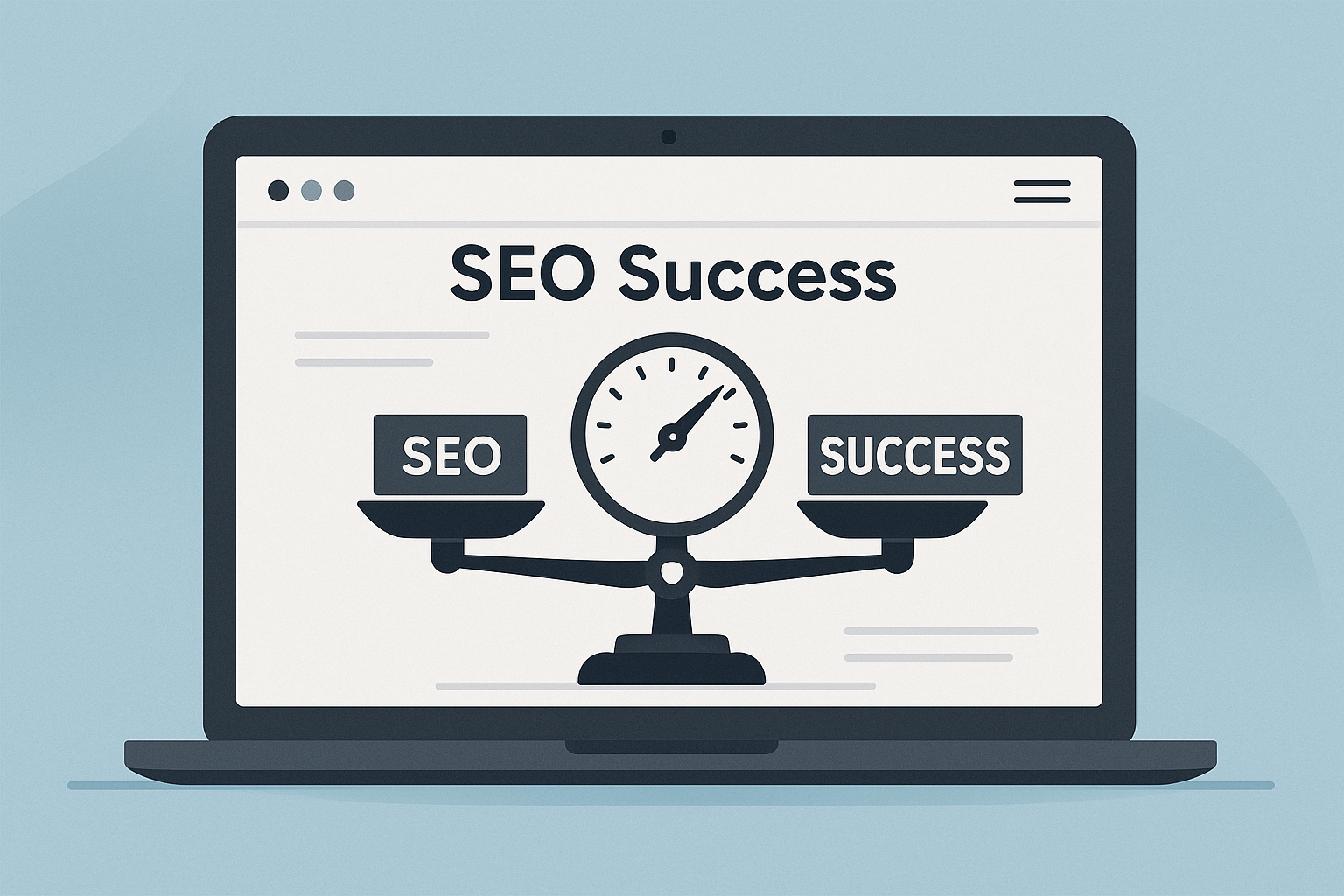For too long, SEO success was narrowly defined by keyword rankings—securing the top spot for high-volume terms once promised organic traffic, and with it, business growth.

Yet search engines and user behavior have evolved. Today’s search landscape integrates AI-driven results, featured snippets, zero-click SERPs, and conversational interfaces.
Consequently, chasing position #1 without considering what happens after the click risks wasted effort and missed opportunities.
In this in-depth guide, we’ll explore the most important metrics and Key Performance Indicators (KPIs) that savvy SEOs and webmasters track in 2025—metrics that align SEO activities to real business outcomes and user satisfaction.
We’ll contrast these with outdated, ranking-only approaches, and illustrate each metric’s significance through industry reports and case studies.
The Pitfalls of Ranking-Only SEO
Obsession with Exact-Match Keywords
Older tactics prioritized Exact Match Domains (EMDs) and keyword (stuffing) density to manipulate search results. While EMDs could briefly boost rankings, they offered limited long-term value without a strong content & backlink strategy. Keyword stuffing similarly produced ephemeral ranking gains, but degraded user experience while inviting future algorithmic penalties.
Neglect of User Engagement and Conversions
Focusing solely on rankings overlooks how users interact with a site—High-ranking pages can still suffer poor bounce rates, low dwell time, and minimal conversions, undermining the fundamental goal of SEO: driving business growth.
Vulnerability to Algorithm Updates
Google’s shift toward people-first and AI-driven algorithms (e.g., Helpful Content Update, 2022) penalizes thin, SEO-centric content and rewards genuine value . Ranking-only strategies risk being swept away by these continuous algorithmic changes.
Key Metrics for True SEO Success
1. Organic Traffic Growth
Why It Matters
Organic traffic—visitors arriving via unpaid search results—reflects the cumulative impact of SEO efforts across keywords and content. Unlike tracking a handful of keyword positions, monitoring overall organic traffic reveals whether SEO is expanding reach and attracting qualified visitors.
How to Measure
- Google Analytics 4 (GA4): Provides insights into user acquisition channels and cohort analysis.
- Traffic Trends Over Time: Month-over-month and year-over-year comparisons to gauge growth momentum.
Case Study: (un)Common Logic
(un)Common Logic drove a 66% increase in quarterly organic traffic, which coincided with a 5× boost in organic-generated leads. This illustrates the direct link between traffic growth and lead volume.
2. Engagement & User Experience Metrics
Core Engagement Metrics
- Bounce Rate: Percentage of single-page visits; high bounce rates often signal mismatched intent or poor UX.
- Dwell Time (Average Session Duration): Time users spend on the site, indicating content relevance and engagement.
- Pages Per Session: Number of pages viewed per visit; higher values suggest strong internal linking and user interest.
Core Web Vitals
Google’s Core Web Vitals (LCP, FID, CLS) are now ranking signals tied to user experience. Fast, stable, and interactive pages correlate with better user satisfaction and SEO performance.
Tools & Techniques
- PageSpeed Insights: Identifies performance bottlenecks and Core Web Vitals scores.
- Hotjar / Crazy Egg: Heatmaps and session recordings to uncover UX issues.
Case Study: Air Charter Advisors
After optimizing a portfolio of websites at Air Charter Advisors, they received Core Web Vitals scores in the high 90s, with fully-loaded times registering in under 2 seconds and the elimination of content layout shifts. This was A/B tested with other sites to show an immediate impact on existing rankings, and opening the sites to rank for for new terms.
3. Conversion Metrics & Revenue Impact
Defining SEO Conversions
SEO conversions span form submissions, calls, downloads, e-commerce transactions, and any action aligning with business goals. Tracking these bottom-of-funnel activities ensures SEO drives measurable ROI.
Key Conversion KPIs
- Conversion Rate: % of organic sessions that convert into leads or sales.
- Cost Per Acquisition (CPA): Organic acquisition cost vs. paid channels.
- Revenue Attribution: Assign revenue to organic search channels using multi-touch attribution models LinkedIn.
Case Study: HubSpot
HubSpot’s content-led SEO strategy boosted organic traffic by 113% in one year, leading to a 23% increase in qualified leads. By focusing on relevant, high-value resources, they maximized conversions from organic channels.
4. Brand Awareness & Search Visibility
Branded vs. Non-Branded Traffic
- Branded Search Share: Percentage of branded queries vs. overall search volume, indicating brand recognition and market share.
- Share of Voice (SOV): Organic visibility across top keywords relative to competitors.
SERP Feature Ownership
Capturing Featured Snippets, People Also Ask, and Knowledge Panels increases brand prominence—more important now than ever as search shifts to zero-click results.
Social & PR Signals
Mentions and backlinks from reputable outlets enhance brand trust and feed into Google’s authority signals.
5. Technical Health & Crawl Efficiency
Crawl & Indexation Metrics
- Crawl Errors: 404s, 5xx errors, and redirect chains harm SEO health.
- Indexed Pages vs. Submitted Pages: Ensures essential content is discoverable.
Structured Data & Schema
Implementing schema markup improves SERP appearance and helps search engines parse content more effectively.
Monitoring Tools
- Google Search Console: Crawl stats, index coverage, Core Web Vitals reports.
- Screaming Frog: In-depth technical audits and data export for large sites.
6. AI-Optimized Content Performance
Beyond Keywords: AEO & GEO
With AI chatbots surfacing direct answers, Answer Engine Optimization (AEO) and Generative Engine Optimization (GEO) focus on structuring content—FAQs, bullet points, clear headings—for easy AI consumption.
Measuring AI Traffic
- Zero-Click Impressions & Clicks: Track how often your site appears in AI-driven responses.
- Voice Search Queries: Monitor voice-preferred long-tail phrases for insights into conversational search performance.
Building a Comprehensive SEO Dashboard
Integrating Data Sources
A unified dashboard pulls data from GA4, Google Search Console, Ahrefs/SEMrush, and PageSpeed Insights, enabling cross-metric analysis and real-time monitoring.
Visualizing Key Metrics
- Traffic Funnels: From search entry to conversion.
- Heatmaps of Engagement: Align content improvements with user behavior.
- Trend Lines: Organic traffic, conversions, branded SOV over time.
Best Practices for Sustainable SEO Success
- Align SEO Goals with Business Objectives: Define clear KPIs—traffic, leads, revenue—before implementing tactics.
- Embrace People-First Content: Prioritize depth, originality, and expertise to satisfy both users and algorithms.
- Invest in Technical Excellence: Maintain fast, accessible, and well-structured sites to support all SEO facets.
- Leverage AI Insights: Use AI tools for content ideation, optimization, and performance forecasting.
- Continuous Monitoring & Iteration: SEO is dynamic—regularly review dashboards, run A/B tests, and adapt strategies based on data.
Conclusion
Moving beyond rankings to measure true SEO success requires a multidimensional approach that tracks not just where you rank, but how those rankings translate into traffic, engagement, conversions, revenue, and brand strength.
By focusing on these holistic metrics—underpinned by robust technical foundations and AI-optimized content—SEO becomes a driver of sustainable business growth rather than just a quest for position #1.
Hi, I’m Adam — a Denver-based SEO and content strategist with over 10 years of experience helping websites climb the search rankings and increase conversions. Whether it’s a site audit, keyword strategy, or a full-blown content overhaul, I bring a creative, technical, and human approach to digital marketing.

